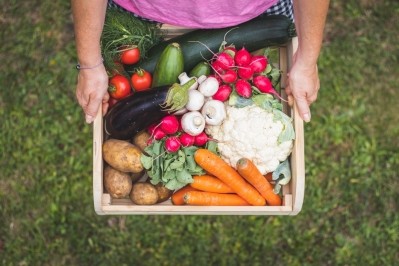Short food supply chains offer ‘socio-economic benefits’ for farmers and consumers

Collaborative Short Food Supply Chains (SFSCs) are food systems with the potential to ‘create a shift in the way we grow, distribute and consume food’, according to EU-funded research conducted under the SMARTCHAIN Project.
These shorter chains are typified by on-farm direct sales, farmers’ markets, community supported agriculture and cooperatives, and direct-to-consumer online sales. The Project identified a success factors and bottlenecks influencing the development of SFSCs.
Keeping it local: Socio-economic benefits of SFSCs
European consumers are increasingly interested in buying locally produced food. According to a report from shopper insight firm IRI, seven out of ten European shoppers identifying “strongly” with ethical purchasing practices and expressing a “clear preference” for buying locally sourced products.
The survey, which gauged the opinion of more than 3,000 European consumers across seven countries, including the UK, Italy, France and Germany, discovered ethical considerations have become closely linked with regional production.
Dr F. Javier Casado Hebrard, from University of Hohenheim and SMARTCHAIN Project Manager, told FoodNavigator that while evidence linking shorter supply chains to environmental gains remains thin on the ground, there are tangible examples of how short supply chains boost the local economy.
“Despite the evidence on the environmental impacts of short food supply chains not being clear, SFSCs seem to allow a higher share of added value to be retained locally, with positive effects on maintaining local employment, particularly in rural areas.
“Beyond the socio-economic reasons, social integration and empowerment have great importance when food producers choose SFSCs, which show better social impacts, with less gender discrimination, less corruption, fair competition and appropriate working time.”
Dr Hebrard conceded that there are limits to what short chain models can achieve – but insisted that they play a valuable role in the overall food system.
“Obviously, SFSCs would not be able to feed alone a growing population, but they can coexist with the supermarkets and other long supply chains, presenting a series of socio-economic benefits for farmers and consumers, for example enhancing the bargaining power of farmers, supporting the rural development, better social impact, ensuring fresh and healthy locally produced food,” he told us.
'Explain why prices may be higher, but fairer’
Short supply chains face a number of barriers, from the perception that they are more expensive than supermarkets to the fact that they are often less accessible and convenient for consumers.
Dr Hebrard stressed that there are a number of reasons why SFSCs might be more expensive, many of which are linked to the fact that they ‘represent small-scale farming’.
“That means, in general, a less resource-intensive and slower way of production, characterised by lower yields and products more natural and, often, more organic. All these reasons increase the prices compared to food buying in conventional long chains.”
Local producers – who want to grow their business with local customers – need to communicate the benefits of their production methods, the SMARTCHAIN Project lead suggested. “It is essential that farmers and food producers involved in SFSCs let customers know how they produce their products, their ethical and social benefits, explaining to them why the prices may be higher, but fair for the farmers and food producers.” This can be achieved through marketing campaigns or local events, he suggested.
Other barriers remain for the development of SFSCs, the food science expert continued. “Together with higher prices, from the consumer perspective, the main identified problems are limited accessibility and convenience compared to the supermarkets and other long supply chains, and a lack of marketing/promotion. Many consumers claim that they do not really know where to find this type of products,” he noted.
SMARTCHAIN produced a booklet with several recommendations to enhance access and convenience of SFSCs. These include joining with other producers to provide a wider range of products in one place – such as farmer markets and cooperative shops – or offering delivery to consumers’ homes or a pick-up point.
In addition to the SMARTCHAIN booklet, the project is now developing a series of recommendations to support short supply chains at a policy level. “The recommendations came with a roadmap with tools and best practices to support their execution.”
By the endo the project in August this year, SMARTCHAIN will complete two dedicated reports that will be submitted to the EU Commission.
“SMARTCHAIN is currently elaborating a best practice guide for the application of reference exploitation models, improving business performance in SFSCs and helping farmers, food producers and regions to capitalise on their distinctive territories,” Dr Hebrard added.















